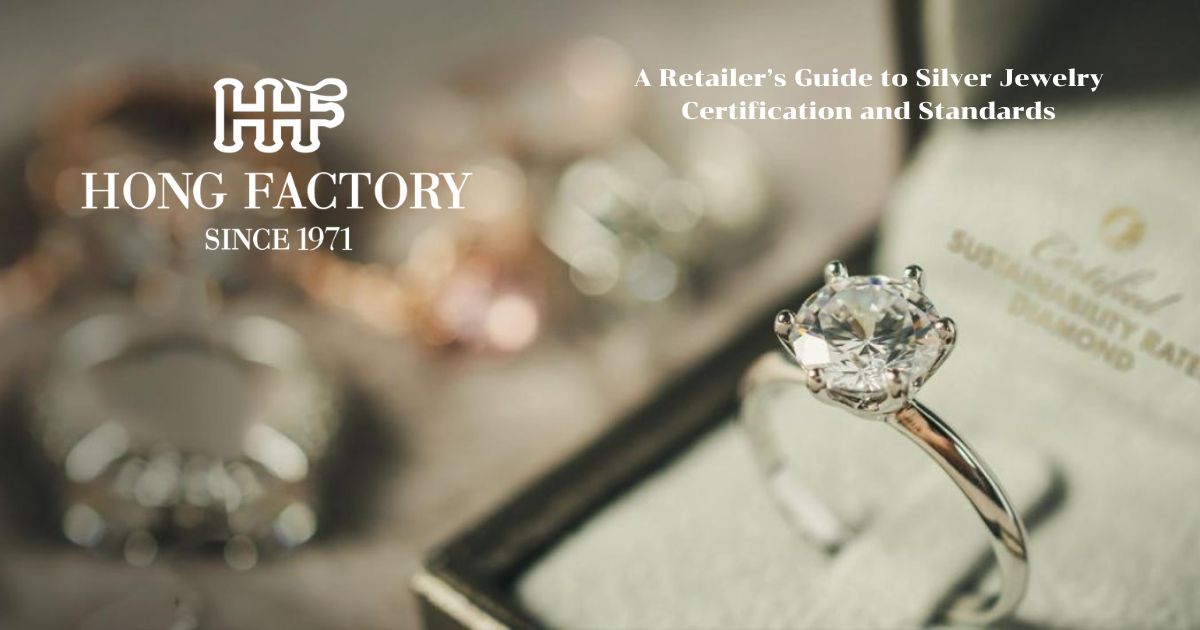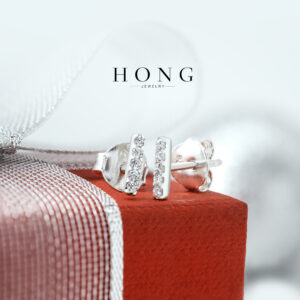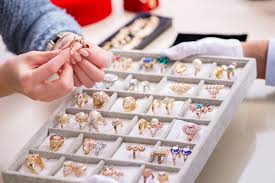For jewelry retailers, trust and transparency are everything. As customers become more informed about what they buy, the pressure is on to provide not only beautiful pieces but also assurance of quality and authenticity. In the silver jewelry sector, this assurance comes from understanding and applying proper certification and standards.
This guide explores the key certifications, standards, and best practices that jewelry retailers need to know when sourcing, selling, or branding silver products.
A Retailer’s Guide to Silver Jewelry Certification and Standards

Why Silver Jewelry Certification Matters
Certification isn’t just a formality—it’s a mark of trust.
Key Benefits for Retailers:
- Ensures consistent product quality
- Builds customer confidence and loyalty
- Protects against counterfeit or substandard products
- Helps meet legal or import/export requirements in different countries
With proper certification, you can confidently market your jewelry as genuine sterling silver and stand out in a competitive marketplace.
Understanding Silver Purity Standards
Silver jewelry is rarely made from pure silver (99.9%) due to its softness. Instead, it’s alloyed with other metals for durability.
Common Silver Grades:
- 925 Sterling Silver: 92.5% pure silver, 7.5% other metals (usually copper)
- 950 Silver: 95% silver, used in some high-end jewelry markets
- 800 Silver: 80% silver, common in antique or vintage items
925 Sterling Silver is the industry standard for most modern jewelry—recognized globally and preferred by consumers.
Tip for Retailers:
Always confirm the purity standard with your supplier and request assay test reports or certification for batches.
Hallmarks and Stamps: What to Look For
Hallmarks are official marks struck on silver to verify its purity and origin.
Common Hallmarks:
- “925” Stamp: Indicates sterling silver
- Assay Office Marks: Found in UK or EU-certified products
- Maker’s Mark: Identifies the manufacturer or silversmith
- Country Mark: Indicates the country of origin (e.g., TH for Thailand)
Important Note: Not all countries require hallmarking, but offering hallmarked silver enhances credibility and meets certain market regulations (especially in the UK and Europe).
Certification Bodies and Industry Standards
Retailers should be familiar with key industry standards and certifying organizations:
1. Responsible Jewellery Council (RJC)
An international non-profit setting standards for responsible business practices across the jewelry supply chain.
- Focuses on ethics, labor, environment, and traceability
- Retailers sourcing from RJC-certified suppliers can advertise more responsibly
2. Bureau of Indian Standards (BIS)
For retailers sourcing from India, the BIS hallmark confirms silver purity.
3. Thai Department of Export Promotion (DEP) and Thai Gem and Jewelry Traders Association (TGJTA)
Thailand is a major silver manufacturing hub. TGJTA and the DEP support export standards and integrity in silver sourcing.
4. Assay Offices (UK and EU)
Provide official assay and hallmark services for precious metals.
- London, Birmingham, Sheffield, and Edinburgh are recognized assay offices
Import/Export Standards by Region
United States:
- No legal hallmarking requirement
- FTC recommends use of “sterling,” “925,” or “.925” with clear descriptions
European Union:
- Hallmarking is often legally required
- Jewelry must be tested and hallmarked by an approved assay office
United Kingdom:
- Hallmarking mandatory for silver items over 7.78 grams
- Must include purity mark, sponsor mark, and assay office mark
Australia:
- No hallmarking laws, but misleading claims are penalized under consumer law
Tip for Retailers:
Ensure your imports meet the destination country’s legal requirements and labeling laws.
How to Vet a Silver Jewelry Supplier
Work only with manufacturers who can provide proper documentation and traceability.
Checklist:
- Purity certification (e.g., 925 stamp with independent assay report)
- Batch-specific quality reports
- Responsible sourcing declaration (RJC preferred)
- Photographs or videos of stamping or certification processes
- Clarity on which certifications they hold and for what markets
Bonus Tip: Ask for sample pieces or third-party lab tests before large orders.
Managing In-House Certification and Communication
If you’re branding silver jewelry under your own label, ensure your marketing matches your certifications.
What to Include in Product Listings:
- Clearly state purity (e.g., “Made from certified 925 sterling silver”)
- Explain any hallmarks (include close-up photos)
- Offer certificates of authenticity with purchase
Packaging Tip:
Include a small card that explains your quality standards and commitment to certified materials.
What to Avoid
Red Flags in the Silver Jewelry Market:
- Vague or inconsistent purity claims
- Missing or fake hallmarks
- “Silver-plated” jewelry passed off as sterling
- No third-party documentation or unwillingness to verify
Selling misrepresented silver can lead to:
- Loss of trust
- Returns or complaints
- Legal liability
How Certification Enhances B2B Relationships
If you’re selling to other retailers or distributors, certification builds stronger partnerships.
- Makes you a more attractive supplier at trade shows
- Helps wholesale buyers promote quality to their end-customers
- Reduces order friction and increases reorder trust
Example: A B2B jewelry supplier that includes RJC certification and purity documentation in their digital catalogs sees higher inquiry and conversion rates.
As the silver jewelry market becomes more global and quality-conscious, certification is no longer optional it’s expected.
Whether you’re sourcing ready stock, managing made-to-order designs, or branding under your private label, investing in proper certification and transparency can elevate your brand, protect your business, and build long-term trust with buyers and customers alike.
Because in today’s market, it’s not just about shine it’s about substance, integrity, and proof.



